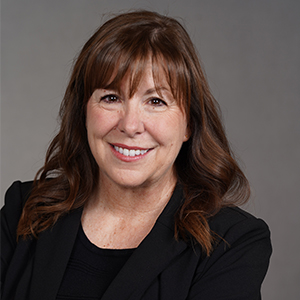We sat down with Nancy Alley, vice president of strategic planning at Simplifile and one of HousingWire’s 2020 Women of Influence, to talk about the rapid changes in the closing process as a result of the pandemic. Will this end up being a watershed moment for the industry?
HousingWire: You’ve been focused on helping the mortgage industry get to an end-to-end digital process for many years. Where are we in that evolutionary process?
Nancy Alley: We are at a turning point in the mortgage industry’s move to digital. While the industry has made steady movement over the years, the pandemic has accelerated the process. Business simply can’t be “as usual.” The pandemic forced everyone in the industry to review processes and quickly replace manual processes with digital to provide efficiency and protect market share.
The industry has been investing in digital for years with strong adoption of digital workflow in the application, processing, and underwriting phases. Yet, adoption by closing and post-closing operations lagged considerably.
We were seeing a lot of traction with hybrid closings in early 2020, but with the pandemic, lenders became hyper-focused on creating a socially-distant closing. We saw similar needs in post-closing as large-scanning or back-office operations were challenged in the new work-from-home environments. All parts of the mortgage value chain started creating digital momentum like we have never experienced before.
HW: Let’s talk about eClosing and the huge changes we’re seeing at closing and post-closing because of the pandemic. What do you think is going to stick when we go back to more normal circumstances?
NA: If there is a silver lining with the pandemic, it showed us that going digital is not only possible but essential to our businesses and our customers. Overnight, our industry had to automate age-old processes, or the manufacturing chain was going to grind to a halt. As I mentioned, the closing and post-closing segments had to turn on a dime.
I was impressed by the nearly-instant, industry-wide collaboration between key stakeholders and trade organizations. These groups came together and published almost daily updates regarding e-notary and e-recording acceptance as well as county closures.
This collaboration helped clear a path through the chaos and provided lenders with the intelligence they needed to quickly shift to digital. While they may have made these changes under pressure, we are seeing lenders be very successful with digital adoption. A year ago, when most lenders were still “piloting” e-closings, settlement agents had to run bifurcated operations to accommodate the many varied pilots without achieving any economies of scale.
Today, increased e-closing volume eases the adoption curve for key stakeholders like title and settlement agents because as e-closing becomes the norm, muscle memory sets in and training burdens diminish. And the uptick hasn’t just been in hybrid e-closing, lenders are committed to making as much of the package digital as possible, driving e-note adoption and registrations by nearly 300%
In post-closing, we’ve seen record e-recording activity from March forward. Not only was face-to-face recording not “socially distant,” some counties were only open for e-recording to protect their employees and support work-from-home operations.
When the dust settles, I don’t expect lenders to go back to their old ways. No one expected or planned for COVID-19’s impact, but we are going to hold on to our collective gains and make sure we are well positioned going forward. What might have taken five to seven years with respect to digital adoption happened almost overnight.
HW: To get to a true end-to-end process, lenders need to collaborate with tech partners. In your experience, what are the hallmarks of a great partnership?
NA: In my experience, a successful partnership requires four things: transparency, collaboration, standardization and working together to achieve a common vision.
Transparency in processes, timelines and abilities creates honest discussions for all parties to trust each other. Once that trust is created, true collaboration can happen. When true collaboration is happening, the strengths of all partners are multiplied to create something greater than anything you could do alone.
When you work to combine separate systems, workflows, processes and cultures, standard processes are key in creating a bridge between parties. This is one thing we have taken to heart. We’ve dedicated years to standardizing settlement agent collaboration and e-closing processes for all transactions. Regardless of the lender closing system, the agent title production system or closing type, settlement agents that use Simplifile navigate the mortgage transaction with the same consistent workflow as they interact with their lenders.
Finally, great partners understand each other and work to achieve a common vision. For example, our e-closing partners share our vision that adoption relies on keeping the process simple, the operational processes consistent and stakeholder workflow predictable.
HW: You’ve worked extensively as part of MISMO — how does that work benefit the larger mortgage industry?
NA: Well, talk about a common vision. Not only does MISMO promote a common data standard for our industry, but the standard is based on an open collaboration between all stakeholders. The standard represents an industry consensus of how we exchange information efficiently and securely. If you ever go to a MISMO meeting, you will witness firsthand the active exchange and dialogue to “get it right.”
Since all stakeholders have a voice in the process, the vision becomes achievable. Since we are an industry based on proprietary systems and disparate parties, the adoption of the MISMO standard will only accelerate the return on our investment in digital, by creating a digital ecosystem.
HW: As one of HousingWire’s 2020 Women of Influence, what is an attitude or habit that has led to your success over the years?
NA: The mortgage industry may seem simple at face value: a transaction of lending someone money to buy a home. However, it is a highly-regulated, complex manufacturing process with multiple inputs, outputs and handoffs between a variety of stakeholders. Until recently, most of these steps remained paper laden and manual.
The two traits that helped me most on my journey are passion and tenacity. Having worked in the mortgage industry as far back as high school, I’ve always had a passion about automating the process. When you are on the assembly line, you can see firsthand the areas ripe for automation. A spark was lit way back then.
I credit tenacity or, at times, pure stubbornness to never giving up on reaching the vision. Digital adoption has taken much longer than any of us hoped, but the dream is coming true. Seeing the gains realized keeps the fire alive in me.
I would also be remiss if I didn’t mention that my success is really that of many individuals. I have been blessed to work with so many passionate people who believed in this journey: folks who mentored me, others who educated me and some who just kept pushing even when things looked dim. And now, I am lucky enough to lead some tremendous new talent who will take this thing to the next level.
Today, the term “influence” excites me most. I hope I can influence others to accelerate our industry’s digital trajectory.






